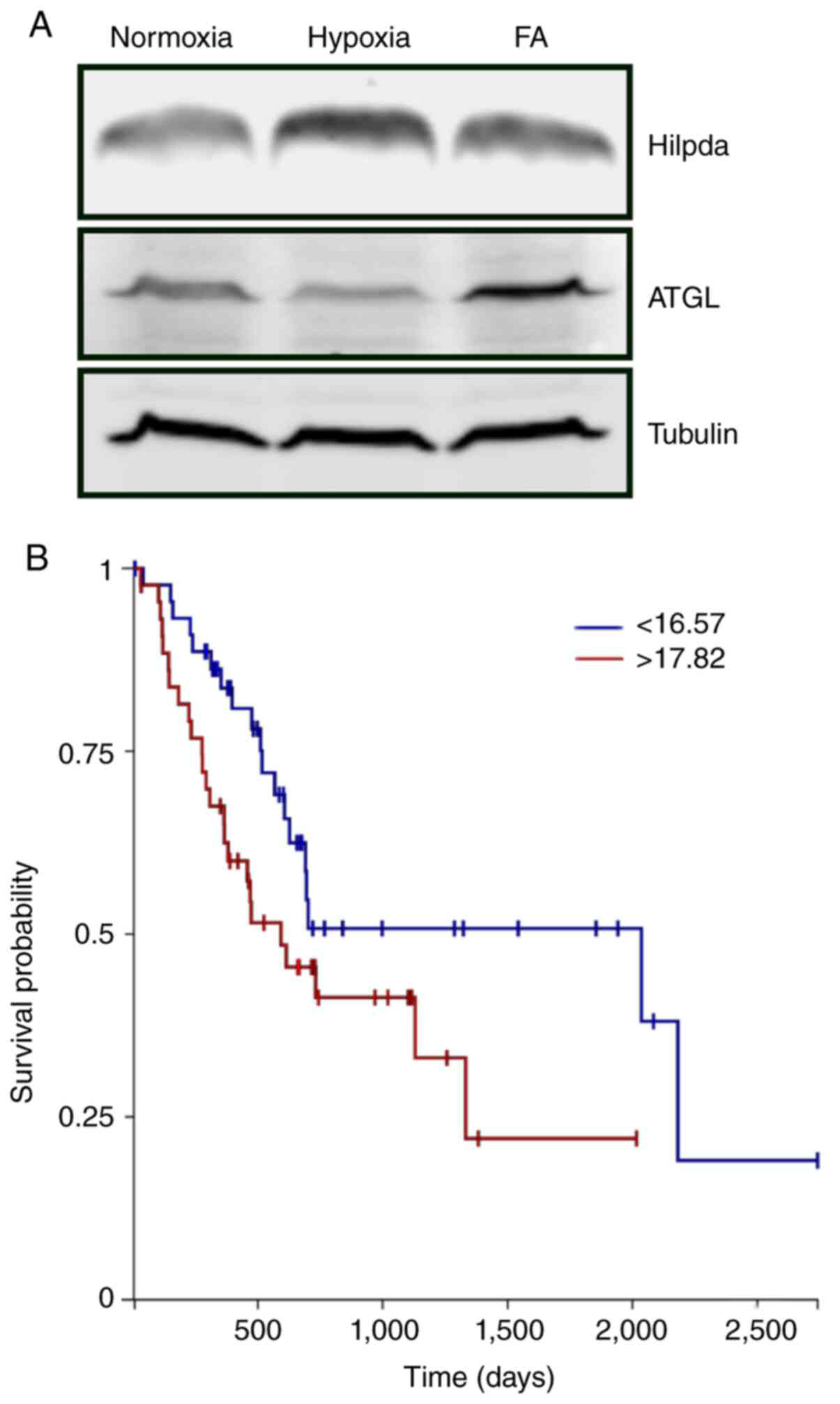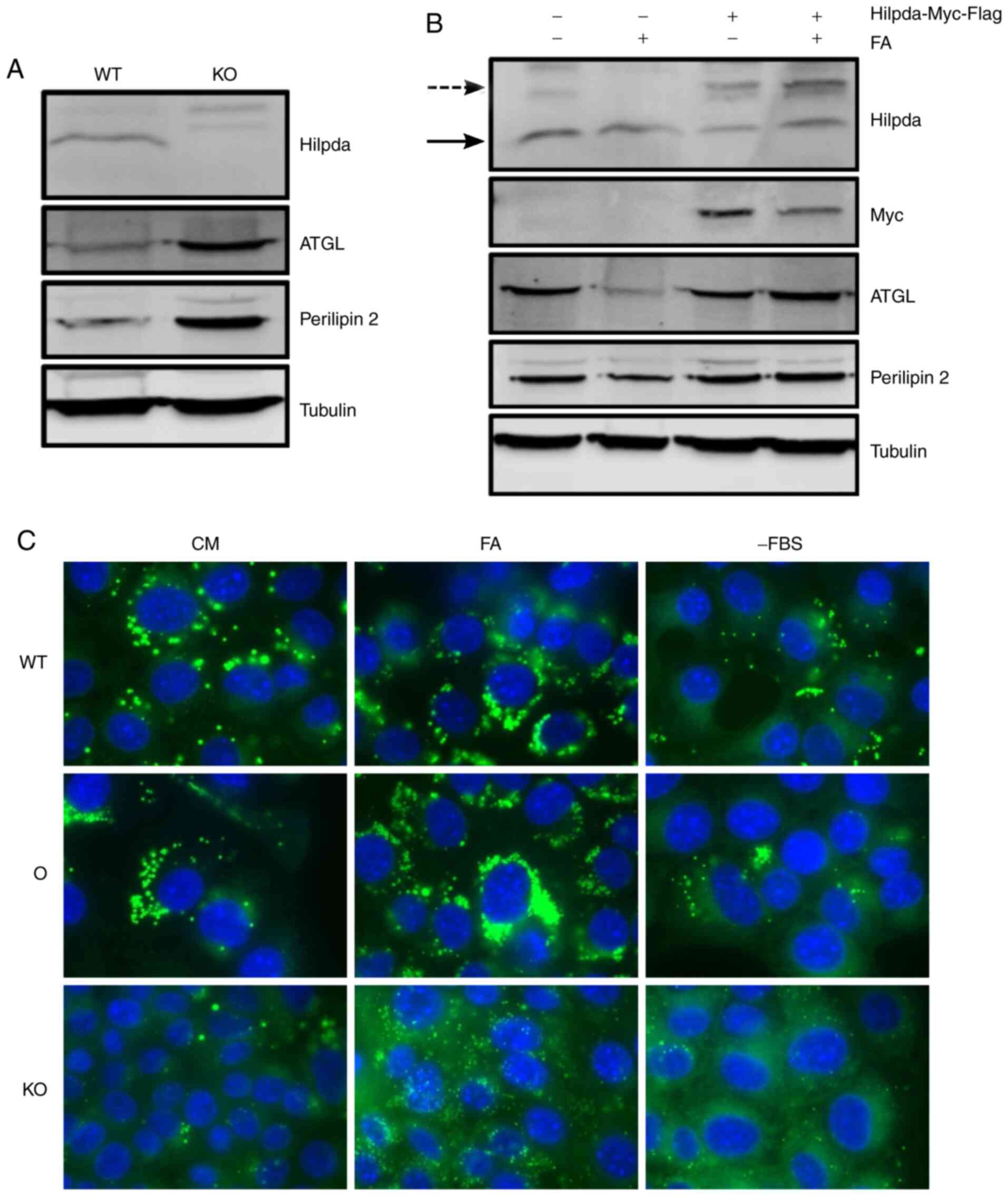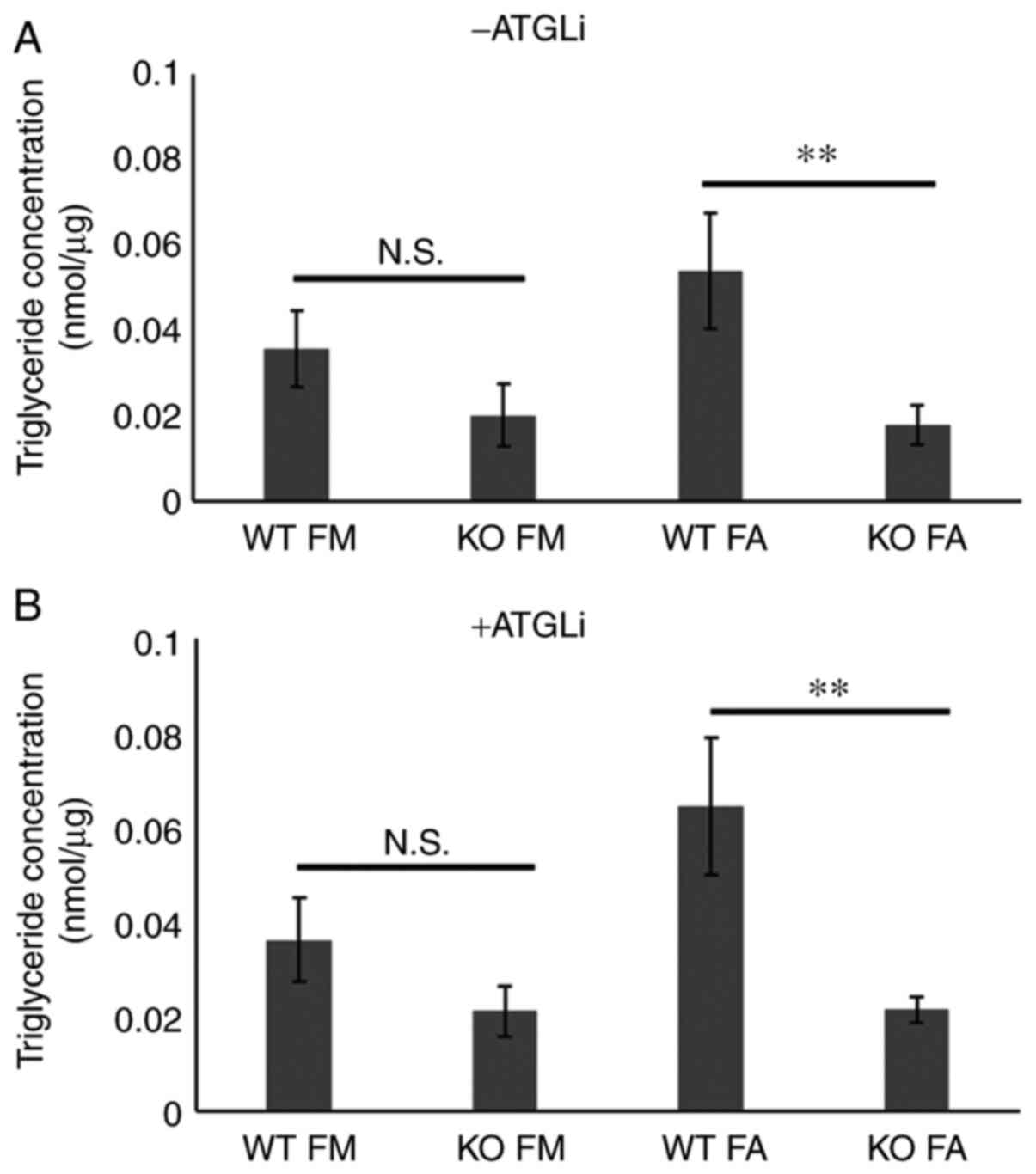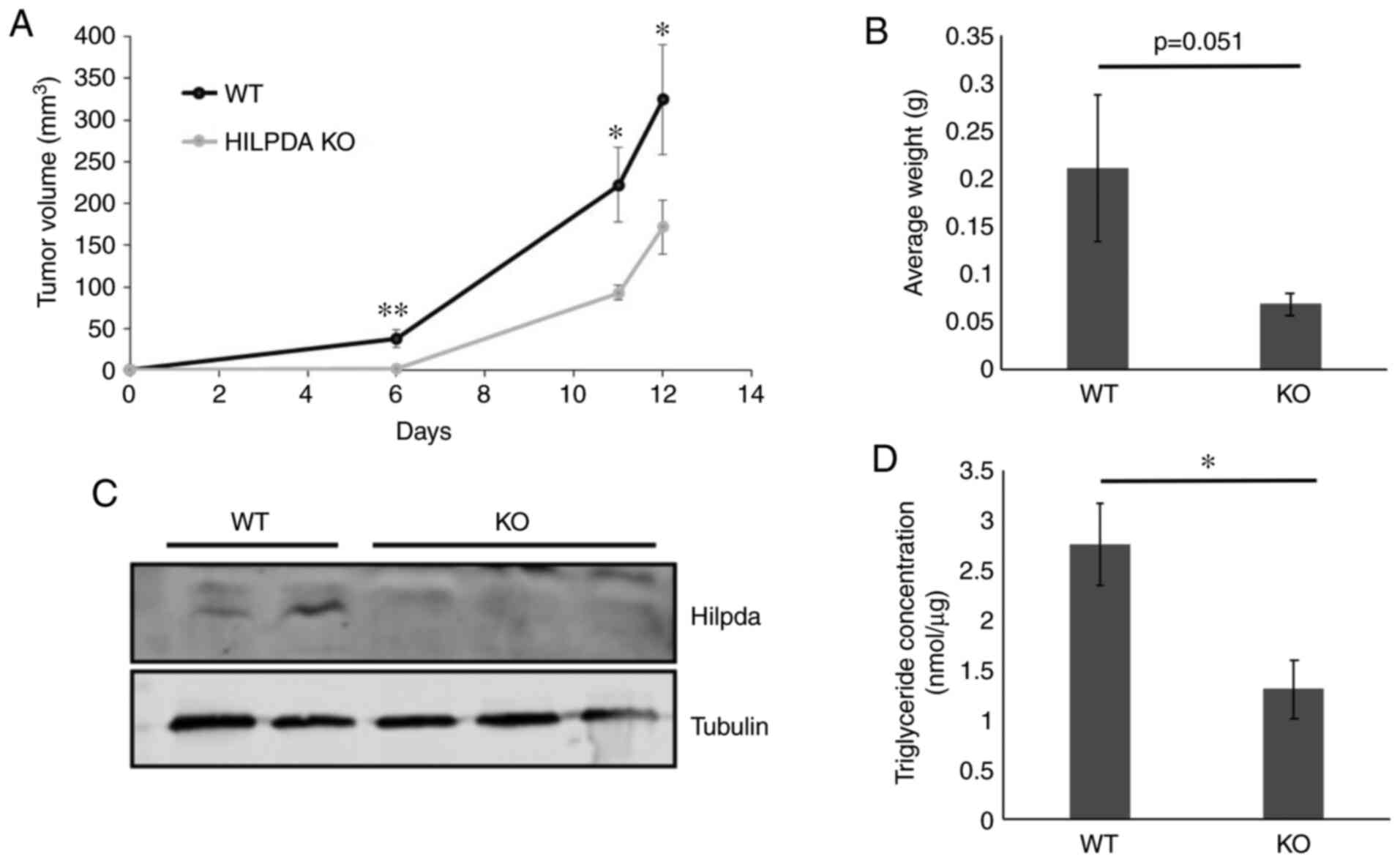|
1
|
Hanahan D and Weinberg RA: Hallmarks of
cancer: The next generation. Cell. 144:646–674. 2011. View Article : Google Scholar : PubMed/NCBI
|
|
2
|
Koong AC, Mehta VK, Le QT, Fisher GA,
Terris DJ, Brown JM, Bastidas AJ and Vierra M: Pancreatic tumors
show high levels of hypoxia. Int J Radiat Oncol Biol Phys.
48:919–922. 2000. View Article : Google Scholar : PubMed/NCBI
|
|
3
|
Stromnes IM, Hulbert A, Pierce RH,
Greenberg PD and Hingorani SR: T-cell localization, activation, and
clonal expansion in human pancreatic ductal adenocarcinoma. Cancer
Immunol Res. 5:978–991. 2017. View Article : Google Scholar : PubMed/NCBI
|
|
4
|
Biankin AV, Waddell N, Kassahn KS, Gingras
MC, Muthuswamy LB, Johns AL, Miller DK, Wilson PJ, Patch AM, Wu J,
et al: Pancreatic cancer genomes reveal aberrations in axon
guidance pathway genes. Nature. 491:399–405. 2012. View Article : Google Scholar : PubMed/NCBI
|
|
5
|
Ying H, Kimmelman AC, Lyssiotis CA, Hua S,
Chu GC, Fletcher-Sananikone E, Locasale JW, Son J, Zhang H, Coloff
JL, et al: Oncogenic kras maintains pancreatic tumors through
regulation of anabolic glucose metabolism. Cell. 149:656–670. 2012.
View Article : Google Scholar : PubMed/NCBI
|
|
6
|
Commisso C, Davidson SM, Soydaner-Azeloglu
RG, Parker SJ, Kamphorst JJ, Hackett S, Grabocka E, Nofal M, Drebin
JA, Thompson CB, et al: Macropinocytosis of protein is an amino
acid supply route in Ras-transformed cells. Nature. 497:633–637.
2013. View Article : Google Scholar : PubMed/NCBI
|
|
7
|
Kamphorst JJ, Nofal M, Commisso C, Hackett
SR, Lu W, Grabocka E, Vander Heiden MG, Miller G, Drebin JA,
Bar-Sagi D, et al: Human pancreatic cancer tumors are nutrient poor
and tumor cells actively scavenge extracellular protein. Cancer
Res. 75:544–553. 2015. View Article : Google Scholar : PubMed/NCBI
|
|
8
|
Palm W, Park Y, Wright K, Pavlova NN,
Tuveson DA and Thompson CB: The utilization of extracellular
proteins as nutrients is suppressed by mTORC1. Cell. 162:259–270.
2015. View Article : Google Scholar : PubMed/NCBI
|
|
9
|
Kamphorst JJ, Cross JR, Fan J, de
Stanchina E, Mathew R, White EP, Thompson CB and Rabinowitz JD:
Hypoxic and Ras-transformed cells support growth by scavenging
unsaturated fatty acids from lysophospholipids. Proc Natl Acad Sci
USA. 110:8882–8887. 2013. View Article : Google Scholar : PubMed/NCBI
|
|
10
|
Ma X, Zhao X, Ouyang H, Sun F, Zhang H,
Zhou C and Shen H: The metabolic features of normal pancreas and
pancreatic adenocarcinoma: Preliminary result of in vivo proton
magnetic resonance spectroscopy at 3.0 T. J Comput Assist Tomogr.
35:539–544. 2011. View Article : Google Scholar : PubMed/NCBI
|
|
11
|
Yabushita S, Fukamachi K, Tanaka H, Fukuda
T, Sumida K, Deguchi Y, Mikata K, Nishioka K, Kawamura S, Uwagawa
S, et al: Metabolomic and transcriptomic profiling of human K-ras
oncogene transgenic rats with pancreatic ductal adenocarcinomas.
Carcinogenesis. 34:1251–1259. 2013. View Article : Google Scholar : PubMed/NCBI
|
|
12
|
Zhang G, He P, Tan H, Budhu A, Gaedcke J,
Ghadimi BM, Ried T, Yfantis HG, Lee DH, Maitra A, et al:
Integration of metabolomics and transcriptomics revealed a fatty
acid network exerting growth inhibitory effects in human pancreatic
cancer. Clinical Cancer Res. 19:4983–4993. 2013. View Article : Google Scholar
|
|
13
|
Guillaumond F, Bidaut G, Ouaissi M,
Servais S, Gouirand V, Olivares O, Lac S, Borge L, Roques J, Gayet
O, et al: Cholesterol uptake disruption, in association with
chemotherapy, is a promising combined metabolic therapy for
pancreatic adenocarcinoma. Proc Natl Acad Sci USA. 112:2473–2478.
2015. View Article : Google Scholar : PubMed/NCBI
|
|
14
|
Gaglio D, Metallo CM, Gameiro PA, Hiller
K, Danna LS, Balestrieri C, Alberghina L, Stephanopoulos G and
Chiaradonna F: Oncogenic K-Ras decouples glucose and glutamine
metabolism to support cancer cell growth. Mol Syst Biol. 7:5232011.
View Article : Google Scholar : PubMed/NCBI
|
|
15
|
Goodman JM: The gregarious lipid droplet.
J Biol Chem. 283:28005–28009. 2008. View Article : Google Scholar : PubMed/NCBI
|
|
16
|
Denko N, Schindler C, Koong A, Laderoute
K, Green C and Giaccia A: Epigenetic regulation of gene expression
in cervical cancer cells by the tumor microenvironment. Clin Cancer
Res. 6:480–487. 2000.PubMed/NCBI
|
|
17
|
Gimm T, Wiese M, Teschemacher B, Deggerich
A, Schodel J, Knaup KX, Hackenbeck T, Hellerbrand C, Amann K,
Wiesener MS, et al: Hypoxia-inducible protein 2 is a novel lipid
droplet protein and a specific target gene of hypoxia-inducible
factor-1. FASEB J. 24:4443–4458. 2010. View Article : Google Scholar : PubMed/NCBI
|
|
18
|
Mattijssen F, Georgiadi A, Andasarie T,
Szalowska E, Zota A, Krones-Herzig A, Heier C, Ratman D, De
Bosscher K, Qi L, et al: Hypoxia-inducible lipid droplet-associated
(HILPDA) is a novel peroxisome proliferator-activated receptor
(PPAR) target involved in hepatic triglyceride secretion. J Biol
Chem. 289:19279–19293. 2014. View Article : Google Scholar : PubMed/NCBI
|
|
19
|
DiStefano MT, Danai LV, Roth Flach RJ,
Chawla A, Pedersen DJ, Guilherme A and Czech MP: The lipid droplet
protein hypoxia-inducible gene 2 promotes hepatic triglyceride
deposition by inhibiting lipolysis. J Biol Chem. 290:15175–15184.
2015. View Article : Google Scholar : PubMed/NCBI
|
|
20
|
Maier A, Wu H, Cordasic N, Oefner P,
Dietel B, Thiele C, Weidemann A, Eckardt KU and Warnecke C:
Hypoxia-inducible protein 2 Hig2/Hilpda mediates neutral lipid
accumulation in macrophages and contributes to atherosclerosis in
apolipoprotein E-deficient mice. FASEB J. 31:4971–4984. 2017.
View Article : Google Scholar : PubMed/NCBI
|
|
21
|
VandeKopple MJ, Wu J, Baer LA, Bal NC,
Maurya SK, Kalyanasundaram A, Periasamy M, Stanford KI, Giaccia AJ,
Denko NC and Papandreou I: Stress-responsive HILPDA is necessary
for thermoregulation during fasting. J Endocrinol. 235:27–38. 2017.
View Article : Google Scholar : PubMed/NCBI
|
|
22
|
DiStefano MT, Roth Flach RJ, Senol-Cosar
O, Danai LV, Virbasius JV, Nicoloro SM, Straubhaar J, Dagdeviren S,
Wabitsch M, Gupta OT, et al: Adipocyte-specific Hypoxia-inducible
gene 2 promotes fat deposition and diet-induced insulin resistance.
Mol Metab. 5:1149–1161. 2016. View Article : Google Scholar : PubMed/NCBI
|
|
23
|
Dijk W, Mattijssen F, de la Rosa Rodriguez
M, Loza Valdes A, Loft A, Mandrup S, Kalkhoven E, Qi L, Borst JW
and Kersten S: Hypoxia-inducible lipid droplet-associated is not a
direct physiological regulator of lipolysis in adipose tissue.
Endocrinology. 158:1231–1251. 2017. View Article : Google Scholar : PubMed/NCBI
|
|
24
|
Zhang X, Saarinen AM, Hitosugi T, Wang Z,
Wang L, Ho TH and Liu J: Inhibition of intracellular lipolysis
promotes human cancer cell adaptation to hypoxia. Elife.
6:e311322017. View Article : Google Scholar : PubMed/NCBI
|
|
25
|
Padmanabha Das KM, Wechselberger L,
Liziczai M, De la Rosa Rodriguez M, Grabner GF, Heier C, Viertlmayr
R, Radler C, Lichtenegger J, Zimmermann R, et al: Hypoxia-inducible
lipid droplet-associated protein inhibits adipose triglyceride
lipase. J Lipid Res. 59:531–541. 2018. View Article : Google Scholar : PubMed/NCBI
|
|
26
|
VandeKopple MJ, Wu J, Auer EN, Giaccia AJ,
Denko NC and Papandreou I: HILPDA regulates lipid metabolism, lipid
droplet abundance, and response to microenvironmental stress in
solid tumors. Mol Cancer Res. 17:2089–2101. 2019. View Article : Google Scholar : PubMed/NCBI
|
|
27
|
Hingorani SR, Wang L, Multani AS, Combs C,
Deramaudt TB, Hruban RH, Rustgi AK, Chang S and Tuveson DA:
Trp53R172H and KrasG12D cooperate to promote chromosomal
instability and widely metastatic pancreatic ductal adenocarcinoma
in mice. Cancer Cell. 7:469–483. 2005. View Article : Google Scholar : PubMed/NCBI
|
|
28
|
Khor VK, Ahrends R, Lin Y, Shen WJ, Adams
CM, Roseman AN, Cortez Y, Teruel MN, Azhar S and Kraemer FB: The
proteome of cholesteryl-ester-enriched versus
triacylglycerol-enriched lipid droplets. PLoS One. 9:e1050472014.
View Article : Google Scholar : PubMed/NCBI
|
|
29
|
Bian Y, Yu Y, Wang S and Li L:
Up-regulation of fatty acid synthase induced by EGFR/ERK activation
promotes tumor growth in pancreatic cancer. Biochem Biophys Res
Commun. 463:612–617. 2015. View Article : Google Scholar : PubMed/NCBI
|
|
30
|
Singh A, Ruiz C, Bhalla K, Haley JA, Li
QK, Acquaah-Mensah G, Montal E, Sudini KR, Skoulidis F, Wistuba II,
et al: De novo lipogenesis represents a therapeutic target in
mutant Kras non-small cell lung cancer. FASEB J.
32:fj2018002042018. View Article : Google Scholar
|
|
31
|
Qiao S, Koh SB, Vivekanandan V, Salunke D,
Patra KC, Zaganjor E, Ross K, Mizukami Y, Jeanfavre S, Chen A, et
al: REDD1 loss reprograms lipid metabolism to drive progression of
RAS mutant tumors. Genes Dev. 34:751–766. 2020. View Article : Google Scholar : PubMed/NCBI
|
|
32
|
Downes DP, Daurio NA, McLaren DG,
Carrington P, Previs SF and Williams KB: Impact of extracellular
fatty acids and oxygen tension on lipid synthesis and assembly in
pancreatic cancer cells. ACS Chem Biol. 15:1892–1900. 2020.
View Article : Google Scholar : PubMed/NCBI
|
|
33
|
Bensaad K, Favaro E, Lewis CA, Peck B,
Lord S, Collins JM, Pinnick KE, Wigfield S, Buffa FM, Li JL, et al:
Fatty acid uptake and lipid storage induced by HIF-1α contribute to
cell growth and survival after hypoxia-reoxygenation. Cell Rep.
9:349–365. 2014. View Article : Google Scholar : PubMed/NCBI
|
|
34
|
Qiu B, Ackerman D, Sanchez DJ, Li B,
Ochocki JD, Grazioli A, Bobrovnikova-Marjon E, Diehl JA, Keith B
and Simon MC: HIF2α-dependent lipid storage promotes endoplasmic
reticulum homeostasis in clear-cell renal cell carcinoma. Cancer
Discov. 5:652–667. 2015. View Article : Google Scholar : PubMed/NCBI
|
|
35
|
Ackerman D, Tumanov S, Qiu B,
Michalopoulou E, Spata M, Azzam A, Xie H, Simon MC and Kamphorst
JJ: Triglycerides promote lipid homeostasis during hypoxic stress
by balancing fatty acid saturation. Cell Rep. 24:2596–2605.e5.
2018. View Article : Google Scholar : PubMed/NCBI
|
|
36
|
Rambold AS, Cohen S and
Lippincott-Schwartz J: Fatty acid trafficking in starved cells:
Regulation by lipid droplet lipolysis, autophagy, and mitochondrial
fusion dynamics. Dev Cell. 32:678–692. 2015. View Article : Google Scholar : PubMed/NCBI
|
|
37
|
Nguyen TB, Louie SM, Daniele JR, Tran Q,
Dillin A, Zoncu R, Nomura DK and Olzmann JA: DGAT1-dependent lipid
droplet biogenesis protects mitochondrial function during
starvation-induced autophagy. Dev Cell. 42:9–21.e5. 2017.
View Article : Google Scholar : PubMed/NCBI
|
|
38
|
Herms A, Bosch M, Reddy BJ, Schieber NL,
Fajardo A, Ruperéz C, Fernández-Vidal A, Ferguson C, Rentero C,
Tebar F, et al: AMPK activation promotes lipid droplet dispersion
on detyrosinated microtubules to increase mitochondrial fatty acid
oxidation. Nat Commun. 6:71762015. View Article : Google Scholar : PubMed/NCBI
|
|
39
|
Listenberger LL, Han X, Lewis SE, Cases S,
Farese RV Jr, Ory DS and Schaffer JE: Triglyceride accumulation
protects against fatty acid-induced lipotoxicity. Proc Natl Acad
Sci USA. 100:3077–3082. 2003. View Article : Google Scholar : PubMed/NCBI
|
|
40
|
Senkal CE, Salama MF, Snider AJ, Allopenna
JJ, Rana NA, Koller A, Hannun YA and Obeid LM: Ceramide is
metabolized to acylceramide and stored in lipid droplets. Cell
Metab. 25:686–697. 2017. View Article : Google Scholar : PubMed/NCBI
|
|
41
|
de la Rosa Rodriguez MA and Kersten S:
Regulation of lipid droplet homeostasis by hypoxia inducible lipid
droplet associated HILPDA. Biochim Biophys Acta Mol Cell Biol
Lipids. 1865:1587382020. View Article : Google Scholar : PubMed/NCBI
|
|
42
|
Kim SH, Wang D, Park YY, Katoh H, Margalit
O, Sheffer M, Wu H, Holla VR, Lee JS and DuBois RN: HIG2 promotes
colorectal cancer progression via hypoxia-dependent and independent
pathways. Cancer Lett. 341:159–165. 2013. View Article : Google Scholar : PubMed/NCBI
|
|
43
|
de la Rosa Rodriguez MA, Gemmink A, van
Weeghel M, Aoun ML, Singh R, Borst JW and Kersten S:
Hypoxia-inducible lipid droplet-associated interacts with DGAT1 to
promote lipid storage in hepatocytes. bioRxiv. Feb 27–2020.(Epub
ahead of print). doi: org/10.1101/2020.02.26.966374.
|













